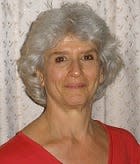Election turnout was pretty good
The recent New Mexico off-year election had an average voter turnout of about 20%. Some commentators said that’s a lousy turnout. I disagree. I think it’s pretty good considering the newness of this process.
It’s really different to have a ballot with only local candidates and issues.
I myself, based on the district I live in, had no city council or school board race. The only candidates on my ballot were running for the board of a soil conservation district. Like most voters, I knew very little about that district.
I also had some bond issues, but those would probably have passed without my help. I could have stayed home, but I found out something about the candidates in the conservation district and voted.
Though the low statewide total turnout was the big newsmaker, the variation from county to county was dramatic.
Top voter turnout was in Colfax County with a whopping 42% of eligible voters turning out. Of a total of 7,554 eligible voters, 3,224 cast ballots.

It’s anybody’s guess what drove this turnout. The biggest population center is Raton, which had only two city commission positions on the ballot. There were contests for mayor in both Angel Fire and Cimarron.
Bond issues for the Cimarron school district and Angel Fire road improvements received higher than 80% support.
A close second was Union County with 40% turnout. Out of 2,282 eligible voters, 922 voted. There was no contested mayoral race. One at-large school board position in Clayton had eight candidates.
De Baca County had 37%. The hot item probably was the contest for mayor of Fort Sumner. This county has only four precincts with 1,226 eligible voters. There were 460 ballots cast countywide. Three precincts are in the municipality, voted in the mayor’s race and cast 299 of those votes. De Baca had above 60% in favor of a hospital mill levy, school bonds and school capital outlay.
The lowest voter turnouts were Curry, 10.25%; Lea, 11.63%; and Cibola, 11.68%.
In Curry, the village of Grady had a contested mayoral vote, with the winner getting 13 votes and the runner-up 10. Clovis, the population center, had no mayoral or city council races. Of two Clovis contested school board seats, District 3 drew 328 votes and District 5 drew 237. Can we speculate that the citizens of Clovis are content with their public schools?
I find it puzzling when there’s a large number of candidates for a position – suggesting several citizens were motivated to run for the office – but a low total voter turnout for that position, suggesting that none of the candidates campaigned very hard. That happened in several races in Lea County.
Eight candidates ran for a city councilor-at-large position in Tatum, but collectively they attracted only 515 votes.
Nine candidates ran for a school board position in Jal. That race attracted 915 votes. The winner beat the second place candidate, 173 to 172. Similarly, a councilor-at-large position in Jal had six candidates, with the winner beating the runner-up by 5 votes, 219 to 214. There must have been a few celebrations in Jal on election night!
Hobbs, by contrast, had three school board races, but two were uncontested and the third had only two candidates. Like Clovis, perhaps Hobbs is also content with its schools.
These consolidated local elections are a tremendous improvement over the past, when separate school board and city council elections drew much smaller numbers. It might take a few tries to get the hang of them. If you showed up at the polls unprepared and felt a little silly, now you understand how it works, and next time you’ll know better. We all will.
Contact Merilee Dannemann through www.triplespacedagain.com.
This article originally appeared on Las Cruces Sun-News: Election turnout was pretty good
